US Sanctions Roseneft & LukOil , two major Russian National Oil Cos - Can they have an impact if India and China continue Russian oil purchases and export finished products to Europe ?
US Sanctions two Russian Oil Cos - Roseneft that imports oil and exports finished products to Europe, circumventing embargoes.
US President Donald Trump has singled out two Russian National Oil Cos to restrict its ability to raise revenues through India and China and support its war machinery in Ukraine
The Sanction Play: From Tough Talk to Soft Landing

By TN Ashok. October 23, 2025
On 22 October 2025 the U.S. Treasury’s Office of Foreign Assets Control (OFAC) announced sanctions on Russia’s two largest oil companies, Rosneft PJSC and Lukoil PJSC, and a range of their subsidiaries. The move is explicitly linked to the war in Ukraine: the Treasury states the action “increase[s] pressure on Russia’s energy sector and degrade[s] the Kremlin’s ability to raise revenue for its war machine and support its weakened economy.”
At face value this appears to be a significant escalation in U.S. policy under Trump’s second term — it is “the first Ukraine-related sanctions on Russia in Trump’s 2nd term.”
But the broader pattern is familiar: bold rhetoric, a dramatic announcement, then signs of strategic ambiguity and geopolitical hedging. Trump’s past dealings with Russia – both in his first term and beyond – have included sanctions, tariff threats and “laser-like” focus on energy dependence, yet also frequent disengagement and de-escalation.
The tension is often palpable — that Trump wants to posture as the warrior-in-chief for Ukraine, but also remains wary of undermining the dollar’s primacy, global oil markets, or driving energy-price shocks at home.
For instance, one senior White House official told NBC News that Trump was following his “gut” on the timing of the sanctions. Meanwhile, Reuters reports the sanctions announcement came just after a cancelled summit with Vladimir Putin, and emphasises that despite the sanctions “analysts said the measures were a big step but long overdue.”
The tension thus is: strong talk about degrading Russia’s war-machine, yet simultaneously an unwillingness (so far) to fully cut energy flows or claw back territory lost in the Donbas region. In short: sanctioning Russia’s oil industry while at the same time signalling a potential soft landing behind the scenes.
What Does Sanctioning Rosneft and Lukoil Achieve?
From a technical viewpoint the sanctions achieve several things:
Revenue pressure on Moscow. Oil and gas remain major pillars of Russia’s state budget and exports. By targ
eting the largest oil firms, the U.S. is aiming to hit Russia at a systemic level.
Signalling tool. These sanctions broadcast to Russia (and to third-party buyers) that continued business with Russia’s dominant oil firms carries elevated risk.
Indirect pressure on end-buyers. The U.S. uses the sanction as leverage to influence other countries buying Russian oil: “We encourage our allies to join us and adhere to these sanctions.”
Market ripple effects. The announcement caused oil futures to rise ~2% as markets factored the possibility of supply disruptions from Russia or rerouting.
Yet there are clear limitations and risks:
The sanctions cover the companies themselves, but unless broadly backed by sanctions on buyers or shipping/trading infrastructure (the “shadow fleet” of Russian oil tankers) the flows may continue under different names. Indeed past sanctions on Russia’s energy sector have often failed to dent the volumes significantly.
If global oil prices spike or alternative supply is constrained, the U.S. domestic economy could suffer. Trump himself has noted caution about the dominance of the dollar in global oil transactions if sanctions push Russia to promote payments in other currencies.
The sanctions do not by themselves reclaim occupied Ukrainian territory or force a ceasefire. They are part of a broader diplomatic toolkit but cannot deliver military outcomes.
Thus, the measure is significant — but it is far from a silver bullet.
India & China: The Release Valves in Russia’s Oil Strategy
The complex axis in this whole narrative lies in Asia — specifically the roles of India and China as major buyers of Russian fossil fuels, thereby softening the intended impact of Western sanctions.
According to the Helsinki-based think-tank Centre for Research on Energy and Clean Air (CREA), from December 2022 to end-September 2025, China imported ~47 % of Russia’s crude oil exports, followed by India at ~38%.
In more concrete terms, Indian refiners in September 2025 bought Russian crude worth about ₹ 25,597 crore (~US $3 billion) in a single month. These flows matter for three reasons:
Reliance exported Rs 6,850 cr worth of fuel from Russian oil to US: Report. Reliance, Nayara gain USD 16 billion from discounted Russian crude as exports to EU, US rise.
India imported 231 million barrels of Urals crude in the first half of 2025, with Reliance and Nayara accounting for 45% of the total imports, data showed.
They provide Russia with a market despite Western price-caps and embargo efforts.
They undermine, in part, the leverage the U.S. and its allies hope to exert by saying: “If you keep buying their oil, you are supporting the war.”
They create a geopolitical friction point: namely, the U.S. expects India (and to a lesser extent China) to moderate purchases if the Russia-Ukraine war is going to be contained.
Specifically, Reuters reported that Indian state refiners are reviewing their Russian contracts to ensure they do not come directly from Rosneft or Lukoil — the newly-sanctioned firms. Meanwhile, the U.S. is reported to be pressing India for a trade deal contingent on reducing Russian oil imports.
The Washington view appears to be: India is acting as a “release valve” for Russian oil, allowing Moscow to keep exporting despite Western sanctions. Reuters puts it this way: “Trump’s India squeeze to push Russian oil further into the shadows.”
The U.S. Tariff Threat & India’s Dilemma
Will US tariffs and shrinking discounts force India to abandon Russian crude?
As the EU and US are pressuring India to reduce imports from Russia, India can easily diversify its purchase of crude, but may not fully stop buying from Russia
The sanctions on Russia thus feed into a broader U.S. strategy of economic pressure. According to a headliner: “The U.S. has not imposed the tariffs on China, another major buyer of Russian oil.” However, the U.S. has applied tariffs on Indian imports in relation to its Russian oil purchases. The story is that the U.S. imposed additional tariffs of up to 25 % on goods from India in retaliation but excluded China under the same ambit.
From the Indian perspective: on one hand India needs cheap energy — Russian crude has been attractive because of deep discounts and logistics favourability. India has arguably exploited that price differential to its advantage. On the other hand, New Delhi faces U.S. pressure: either reduce Russian oil imports (as part of a U.S.–India trade package) or face higher tariffs/other consequences.
Thus India is in a strategic bind: its energy security (and cost competitiveness) demand a supply of cheap crude; but its strategic partnership with the U.S. — especially in a shifting geo-strategic Asia-Pacific environment — demands compliance with U.S. no-Russia opportunities.
So What’s the Effect on Russia, India, China—and the War in Ukraine?
On Russia:
The sanctions target its top oil companies. If backed by wide-scale enforcement (shipping, trading, financing) they can raise its cost of capital, reduce its revenues and eventually erode its ability to sustain the war-economy.
Yet given that the majority of Russia’s oil is now still finding buyers (in Asia) the near-term effect will likely be modest. Indeed, one analyst said: “So far, almost all the sanctions against Russia for the past 3.5 years have mostly failed to dent either the volumes produced by the country or the oil revenues.”
In short: Russia still has stubborn resilience. The sanction may bite over time, but immediate breakthrough on the war front is unlikely.
The 5 Biggest Chinese Oil Companies
The U.S. continues to lead growth in the world’s oil supplies, with global oil demand continuing to grow for the foreseeable future. But despite the U.S. leading oil production, it’s companies from China that continue to dominate the oil and gas sector when it comes to revenues.
China’s biggest crude oil companies are mostly state-owned energy conglomerates with sprawling international operations in exploration and production, petroleum and chemical processing, storage and transportation, as well as many other functions along the oil and gas supply chain. Keep reading to find out more about the top five Chinese oil companies by revenue. Note that all of the figures are current as of August 2023.
Key Takeaways
China is home to many large oil and gas companies—most of which are state-owned.
China National Petroleum Corporation is one of the largest oil companies in the world and ranks first in terms of revenue.1
Sinopec is China’s largest oil supplier and its second-largest oil producer.2
CNOOC, Shaanxi Yanchang, and Sinochem are also among the largest oil producers in China.
1. China National Petroleum Corporation
Founded: 1988
Headquarters: Beijing
China National Petroleum Corporation, or CNPC, is the largest Chinese crude oil producer by revenue and the biggest by production volume. The company ranked in the fourth spot on the Fortune Global 500 list with roughly $483.02 billion in revenue.1
CNPC operates businesses along the full length of the oil supply chain, from initial exploration to retail, with more than one million people working across the world.1 Most CNPC operations are organized under PetroChina, a subsidiary company that was established in 1999.4 The company’s shares trade on the HKG. Shares started trading on the Shanghai Stock Exchange in 2007.56
The company delisted PetroChina’s American depositary receipts (ADRs) from the New York Stock Exchange (NYSE) in August 2022, citing regulatory differences. It also said that the company never used its American listing to raise capital from shareholders.7
2. Sinopec
Founded: 1983
Headquarters: Beijing8
China Petroleum and Chemical Corp., known informally as Sinopec, is an oil, gas, and chemical giant. It is also one of the world’s largest corporations. The company ranked in the fifth spot on the Fortune list of the Global 500 companies, with revenues of about $471.15 billion.2
Sinopec is China’s largest supplier of oil and its second-largest producer. Sinopec maintains vast operations along the full length of the oil supply chain, from exploration and drilling to retail sales. The company employs about 542,300 people across the world.2
Sinopec shares started trading on the Hong Kong Stock Exchange (HKG) in 2000. The company was subsequently listed on both the Shanghai Stock Exchange and the New York Stock Exchange (NYSE).9 Sinopec voluntarily delisted its ADRs from the NYSE because of the “administrative burden” required to maintain the listing. Trading ceased in September 2022. The company also pulled shares from the London Stock Exchange (LSE) as of November 2022.10
Important
Foreign companies with assets of at least $43 million can take part in oil and gas exploration and production within China.11
3. Sinochem Group
Founded: 1950
Headquarters: Beijing12
Sinochem Group was established during the reorganization of China’s largest international trading firm, China National Chemicals Import and Export Corporation. Sinochem Group remains one of the largest chemical companies in the country, but it has expanded its operations to include energy, real estate, agriculture, and financial services.12
The company earned about $172.84 billion in revenue, taking the 38th spot on the Fortune Global 500 list.13 Sinochem owns more than 300 subsidies including Sinochem International, China Jinmao, and Sinofert.12
4. China National Offshore Oil Corporation
Founded: 1982
Headquarters: Beijing1415
China National Offshore Oil Corporation, known as CNOOC, focuses on oil and gas exploration and production in China’s offshore waters. It has since developed into an international company with operations in 20 countries.16 CNOOC earned $164.76 billion in revenue, ranking in the 42nd spot on Fortune’s Global 500 companies list.17
In addition to oil and gas exploration and production, CNOOC is also engaged in refining, power generation, retail marketing, and engineering. Most of the company’s primary operations are organized under its subsidiary, CNOOC Limited. CNOOC is listed on the Hang Seng Index.18
5. Shandong Energy Group
Founded: 2020 (incorporated)
Headquarters: Jinan, Shandong, China12
Shandong Energy Group was incorporated in 2020 after it merged with Yankuang Group. The company has more than 20 subsidiaries in China. It also has 10 different national and global public companies under its umbrella. The company ranks 72nd on Fortune’s Global 500 list and employs more than 232,000 people around the world.19
The company primarily operates in coal exploration and mining, electric power, manufacturing, and logistics. But it also has a presence in oil production—notably in shale oil. Revenues were recorded at about $124.09 billion in 2023.19
What Are the Largest Oil Companies in the World?
The largest oil companies in the world by market cap as of August 2023 are Saudi Aramco ($2.22 trillion), Exxon Mobil ($443.23 billion), Chevron ($300.86 billion), Shell ($205.79 billion), and PetroChina ($182.69 billion).
Who Is China’s Largest Oil Supplier?
Saudi Arabia was China’s largest oil supplier, making up 17% of total Chinese imports. China purchased over 86 million tonnes of crude oil from Saudi Arabia in 2021.21
Does China Buy Oil From the U.S.?
Yes, China does buy oil and petroleum products from the U.S. In 2022, China bought more than 231 million barrels of oil and petroleum products from the U.S.22
The Bottom Line
China is one of the fastest-growing economies in the world. This means the country is highly dependent on rich energy sources. In fact, it was the largest energy consumer in 2020. But China isn’t just a net importer of oil and other fossil fuels, it was also the largest producer of energy in 2020, too.21 This is due to the state-owned companies that explore, refine, and produce energy products, including crude oil. Many of these appear on Fortune’s Global 500 list of top companies.
On India and China:
India: Data reveals strong Russian oil purchases continuing despite U.S. pressure. For example, Indian refiners reviewing contracts (but not yet entirely ceasing). If India does reduce Russian oil imports, it will likely raise its cost of procurement, forcing higher prices for refined products or increase reliance on Middle East crude (with potentially higher logistics cost). That could strain Indian energy margins and consumer prices. The U.S. tariff threat adds a second dimension: reducing the attractiveness of trade with the U.S. if energy independence is compromised.
China: While less publicly pressured by the U.S. (so far) regarding Russian oil purchases, China remains the biggest single buyer of Russian crude exports. The Western pressure – and the sanctions on major Russian players – increase China’s bargaining power (Russia may offer deeper discounts) but also increase the risk of geopolitical complication (shadow-fleet risks, finance/trade sanctions).
On Ukraine & the war:
Sanctions of this kind are part of the economic warfare being waged by the West against Russia. The idea is to raise the cost of Moscow’s war machine so that either Russia seeks peace or its capacity to sustain the war erodes. But there are three caveats:
The sanctions don’t automatically translate into meaningful battlefield shifts (troop withdrawals, territory return). Without military leverage or credible negotiations, Russia may hold its ground.
If India/China continue to buy Russian oil, Russia’s ability to circumvent Western financial architecture remains strong. The “release valve” effect means Russian revenues may not collapse.
The U.S. behaviour here is somewhat inconsistent: strong sanctions on Russia’s oil sector, but at the same time reluctance to forcefully push Putin on territory in Donbas or the occupied zones. The war has evolved into a war of attrition, and the U.S. may be tacitly accepting a long haul rather than a swift resolution.
Hence, while the sanctions send a strong signal, the effectiveness depends heavily on third-party compliance, enforcement, and the willingness of Russia’s buyers to pivot away.
Is India’s Elite Playing Both Sides?
Opposition parties in India are raising the question whether India’s top billionaires or its energy firms are part of a “deep state playing both sides” — i.e., simultaneously exploiting Russian oil discounts and managing U.S. strategic alliances. While there is no credible source that explicitly documents Indian billionaires as part of a covert “deep state” arrangement, the reality is subtle:
Indian state refiners (many of them public-sector, e.g., in IndianOil, Bharat Petroleum, etc) are reportedly reviewing their Russian contracts to avoid sanctioned sources. Oil & Gas sector PSUs are state owned but have functional autonomy and their boards can made individual choices based on their profit lines and can keep their nodal ministry of Petroleum & Natural Gas informed and not run to their doors for approvals.
The commercial incentive to buy discounted Russian oil is strong, especially given India’s energy needs and refining capacity.
At the same time, India’s foreign policy has traditionally emphasised strategic autonomy: balancing U.S., Russia, China interests rather than aligning wholly with one camp. For instance, Prime Minister Narendra Modi reinforced India-Russia ties even as the U.S. raised tariffs over Russian oil purchases.
So while the term “deep state” may be hyperbolic, what we do see is elite commercial and strategic actors in India navigating a complex set of interests: energy security, economic cost-competitiveness, trade relations with the U.S., and strategic partnership with Russia. Whether this counts as “playing both sides” depends on a vantage point — pragmatic hedging or opportunistic double-bookkeeping.
From Sanctions to Tariffs: U.S. Pressure on India
The U.S. strategy is not simply to sanction Russia; it is to impose secondary pressure on countries that continue to buy Russian oil. For India, this has taken the form of tariff threats on imports. For example, one media report noted the U.S. to hike tariffs on India to 50 % over Russian oil purchases.
Add to that the trade negotiations: Indian media reported that a U.S.–India trade deal under discussion might reduce U.S. tariffs on Indian imports — if India agrees to gradually reduce Russian oil imports.
Thus the logic is: “Reduce Russian oil purchases → we ease tariffs/trade pressure.” India must ask itself: is cheaper oil worth the long-term cost of trade friction with the U.S.? And how much of its strategy is defined by energy versus strategic alignment?
Why the Yielding to Russia on Ukraine?
While the sanctions are strong in intent, the overall U.S. posture on Ukraine has aspects of concession or accommodation. For example, analysts note that despite sanctions, the war in Ukraine continues, Russia holds large swathes of territory in the Donbas and south, and the West has yet to compel a meaningful ceasefire. The U.S. sanctions may signal resolve, but they are not matched with military commitment to reclaim territory. In simple terms: economic tools without full-scale enforcement or battlefield leverage may leave Russia freer to dig in.
It is worth emphasising that sanctioning oil companies is important — but not sufficient to reverse territory capture or force a rapid settlement. The Kremlin may choose to de-escalate commercially (offering prices, shifting buyers) while still holding military gains.
Outlook and Key Variables to Watch
For the next phase, here are what I consider key variables to monitor:
Compliance of India & China: Will India meaningfully reduce Russian oil imports in response to U.S. pressure? Will China face similar pressure later?
Shadow-fleet/evading mechanisms: Russia has for some time used shipping workarounds to export oil via “shadow fleet” vessels. If this continues, sanctions on Rosneft/Lukoil may have limited effect.
Oil price dynamics: If global oil prices spike (due to supply disruption or OPEC + decisions), the cost of sanctions will rise for importing countries, making them less willing to cooperate.
Russia’s resilience & exports: If Russian production and exports remain stable, the sanctions become a prolonged war of attrition rather than a decisive lever.
Diplomatic breakthrough or stalemate: If Moscow sees the risk of unbounded sanctions and export losses, it may reluctantly negotiate; alternatively, it may persist until a negotiated settlement on its own terms emerges.
Conclusion: Bold Posture, Fragile Leverage
In sum: the United States under Trump has declared a major escalation in its sanctions regime against Russia by targeting Rosneft and Lukoil. It is meant to hit the heart of Moscow’s oil-export machine and to compel other countries (notably India) to join or face trade consequences. At the same time, the systemic dependencies – India’s energy needs, China’s appetite, Russia’s alternate export routes – mean the leverage is fragile and the outcome uncertain.
If India and China pivot away from Russian oil, the pressure would ratchet up dangerously for Moscow’s war-economy. But if they hold firm (or only moderate modestly), the sanctions risk becoming symbolic. Moreover, without a clear military/diplomatic path to force Russia out of occupied Ukrainian territories, the sanctions alone may not deliver a swift peace.
Finally, India’s balancing act – cheap Russian oil vs. closeness to the U.S. – remains an open question, and whether Indian energy elites are simply opportunistic or strategically hedging may depend less on covert “deep state” machinations than on the pragmatic calculus of cost, risk and strategic autonomy.
The game is set. The prize: whether Russia pays a real price for the war, or whether it finds new lifelines via Asia. And whether the U.S. is willing to turn bold sanctions into a sustained, enforced campaign — rather than a one-off headline.






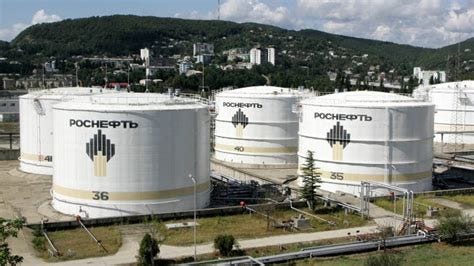

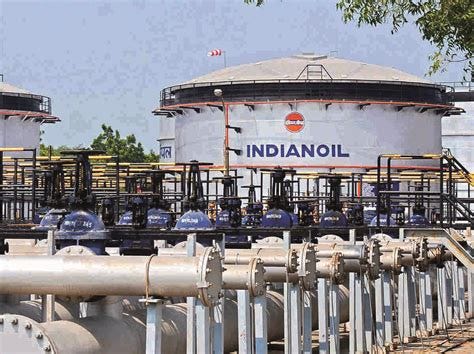





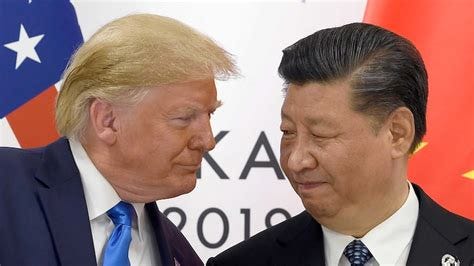

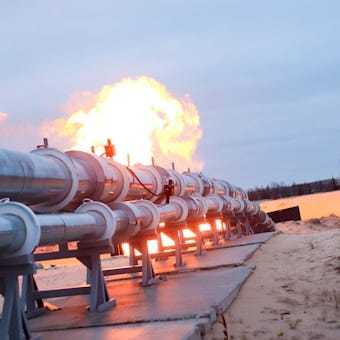
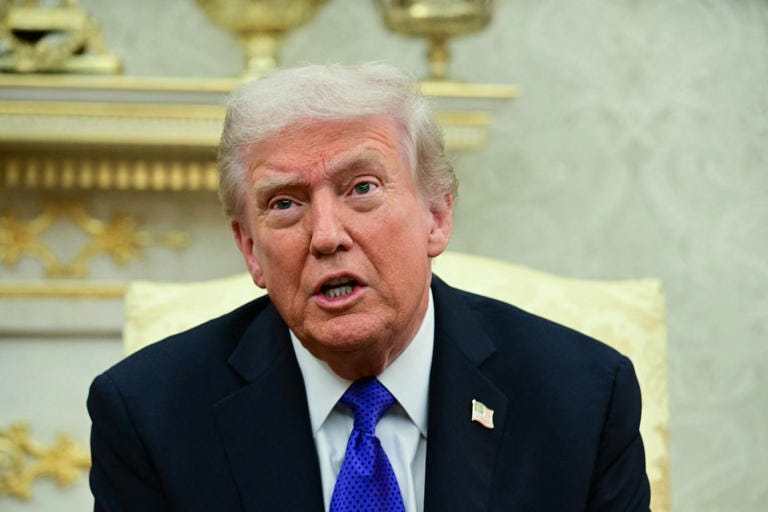
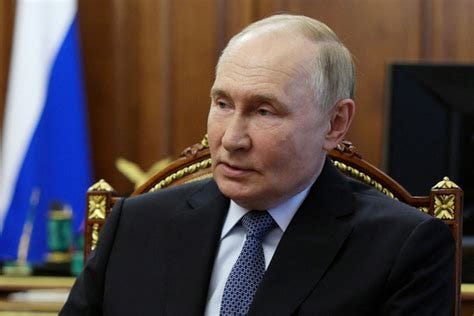
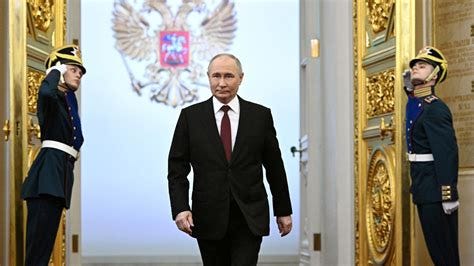
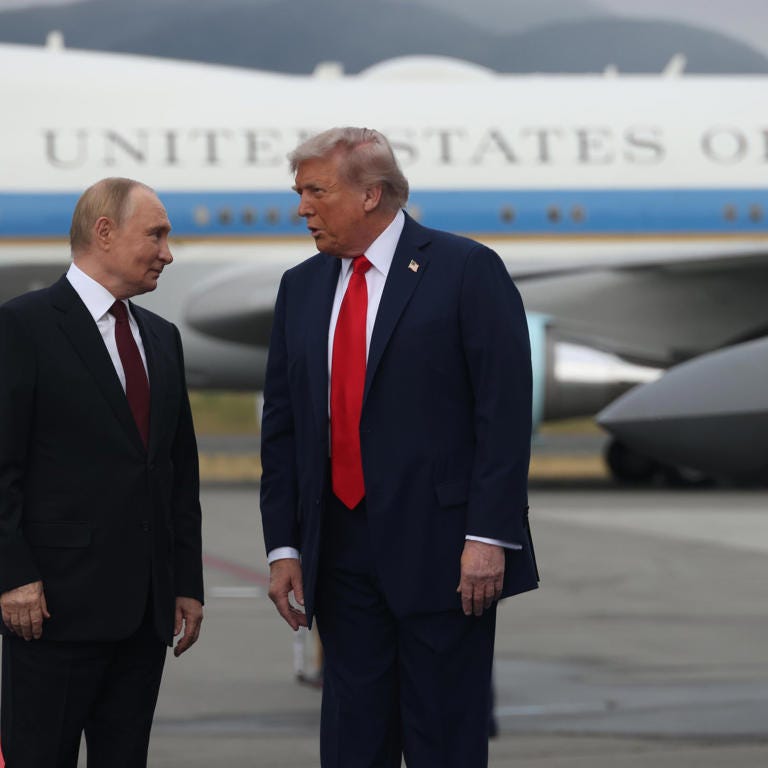
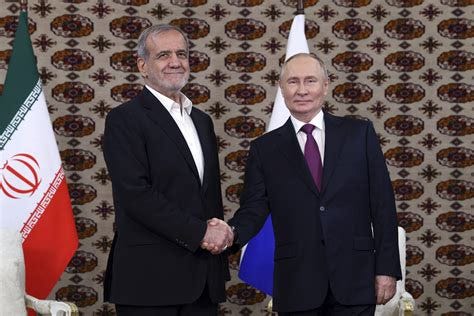

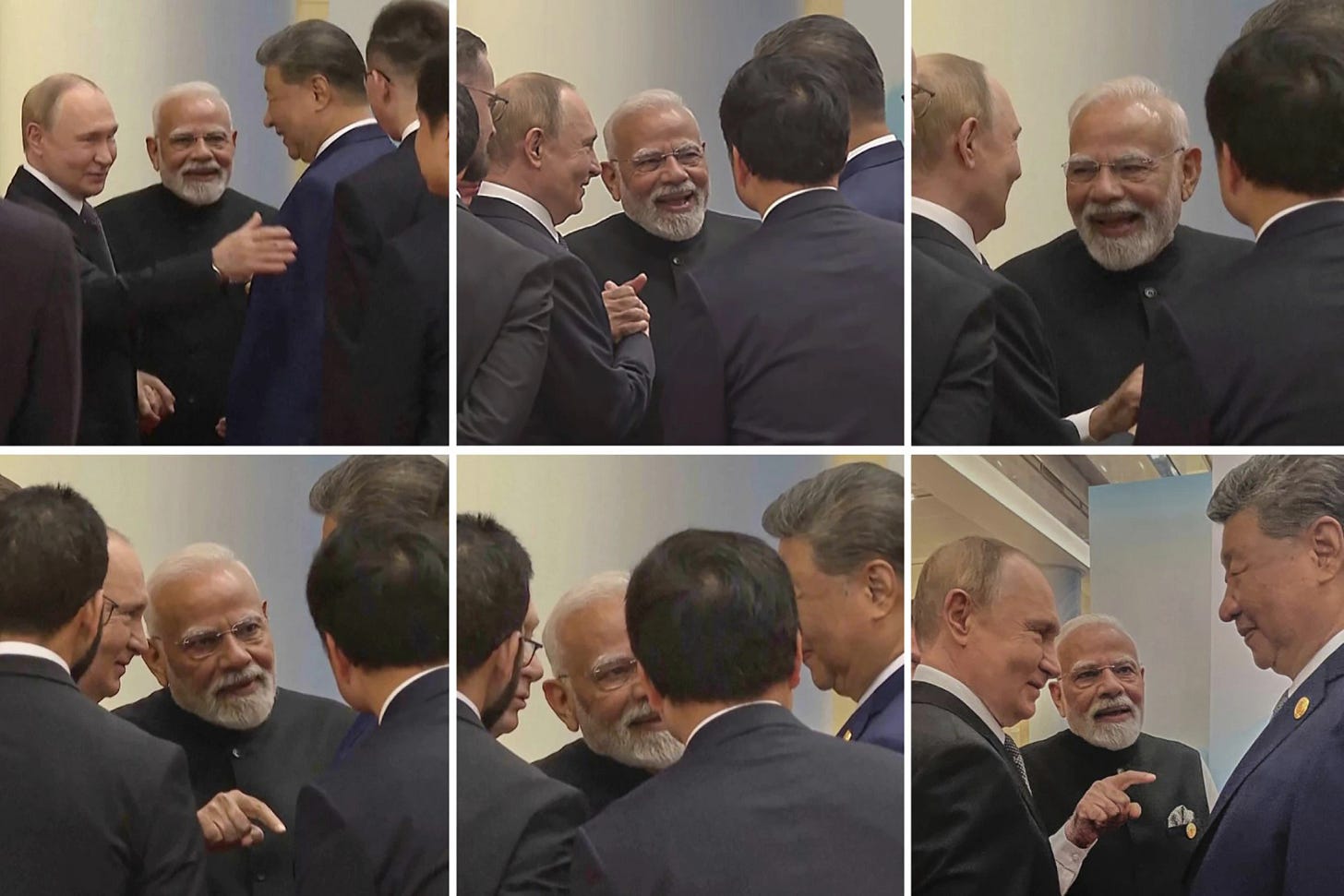
Comments
Post a Comment